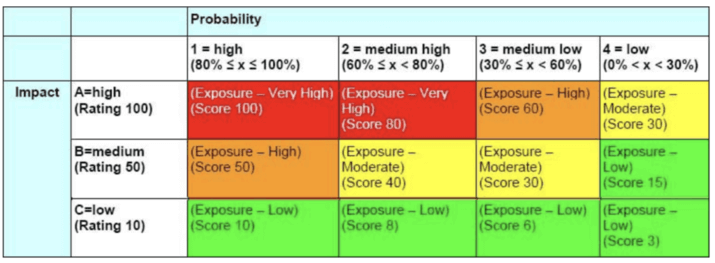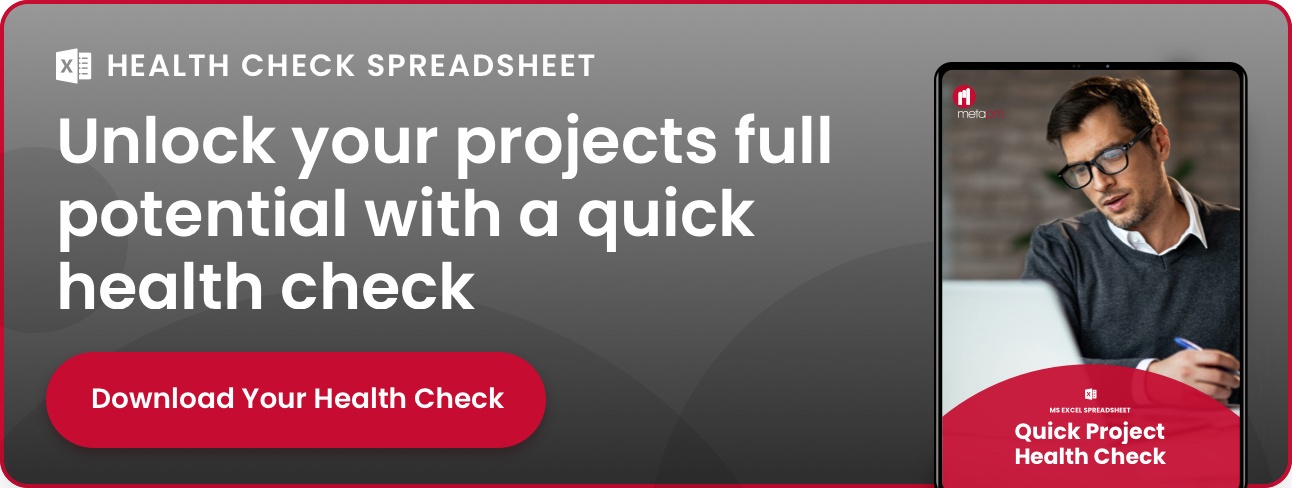5 Steps to Mitigate Project Risk
Meet, Business Analyst
MetaPM Team
Large or small, all projects are affected by risk. Whether it’s to technology, people, processes or resources, risks have the potential to derail your project if left unattended.
So how can project leaders effectively manage and mitigate risks before they have negative consequences on project delivery? Here are five simple steps to mitigating project risk.
1. Establish a Risk Management Framework
Risk Management Frameworks are used in many industries as a way to identify, classify and address risks. They provide a structured and adaptable method for effective risk management, making them a valuable tool in any project leader’s arsenal.
The Project Management Institute identifies four core pillars of risk management:
- Risk identification
- Risk evaluation
- Risk handling
- Risk controlling
A Risk Management Framework should provide guidelines within each of these pillars, such as using a classification checklist to define risk type, a risk matrix to evaluate potential impacts, and a risk register to log corrective actions.
2. Use a Risk Analysis Checklist
It’s often said that in battle, knowledge of your enemy is as powerful as any weapon to defeat them. The same principle applies to effective risk management; only with a thorough understanding of the risks your project is facing can you make strategic decisions on how to proceed.
A Risk Analysis Checklist is designed to arm you with the clarity needed to make informed corrective actions. It should be used to outline:
- The risk scope and area of impact (e.g. technology, people or resources)
- The probability of the risk occurring
- The timeframe within which the risk may occur
- The impact it may have on project delivery
- The resources delegated to combatting the risk if necessary.
With comprehensive risk analysis, project leaders can determine whether the risk must be eliminated entirely, reduced in its probability or lowered in its potential impact.
3. Determine Probability and Prioritise
Determining probability is perhaps the most important exercise in risk evaluation. An accurate view of how and when each risk may affect project delivery allows managers to prioritise their response.
The Project Management Institute outlines a detailed framework for identifying risk probability, which is called an Impact-Probability Matrix.

Impact-Probability Matrix
These models combine the probability and potential impact of individual risks to rank them in order of importance. Project leaders can then decide on which risks warrant a response plan, and which can be safely monitored without corrective action.
Sweating the small stuff and allocating undue resources to low-impact and low-probability risks can in itself be a threat to effective project delivery.
4. Practice Early Intervention
Risks often grow with time. If your analysis has identified a high-impact and high-probability risk, don’t delay in formulating a response plan. Corrective action in the early stages can minimise the impact of risks on your project delivery.
Project managers should treat risk response with the same diligence as the project at large. That means delegating responsibility, calculating timeframes and budgets and communicating progress to project stakeholders.
You may document this information on a Risk Register, and delegate roles such as a Risk Owner who becomes accountable for the management of the individual issue.
5. Communicate With Project Stakeholders
Open communication with stakeholders is integral to any project. When it comes to risk, project leaders and stakeholders should align on their risk tolerance, and set clear expectations for when issues should be escalated above the project manager.
You may come across phrases like ‘risk tolerance’ and ‘risk appetite’, and it’s important to distinguish between the two in conversations with stakeholders. According to the ISO/73:2009 Risk Management Vocabulary, the definitions for each are as follows:
Risk appetite: the amount and type of risk that an organisation is willing to pursue or retain.
Risk tolerance: the organisation’s or stakeholder’s readiness to bear the risk after risk treatment in order to achieve its objectives.
Discussing each the risk appetite and risk tolerance will ensure project leaders and project stakeholders are on the same page in terms of an acceptable risk threshold.
Risk management is not a “set and forget” process; it’s an ongoing activity that should be kept central to project management. By practising ongoing risk identification, classification, assessment and response, project leaders can ensure they stay on top of threats to their project delivery.
If you’d like to harness the power of an experienced team of project management professionals, get in touch with us about our flexible Consulting and Resourcing solutions.
Weekly Newsletter
Subscribe to our newsletter today to keep up to date on what’s happening.


